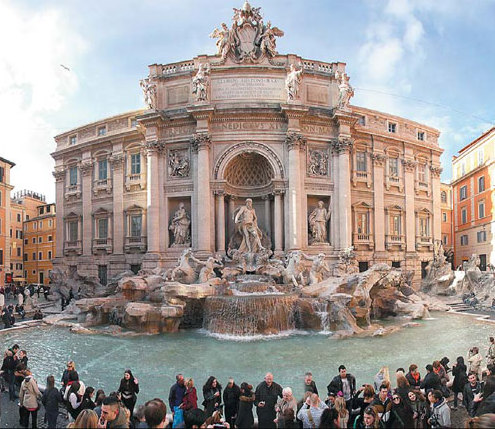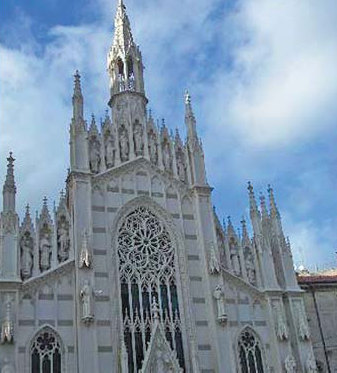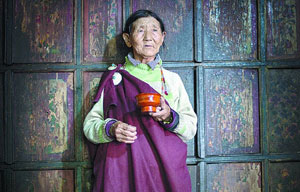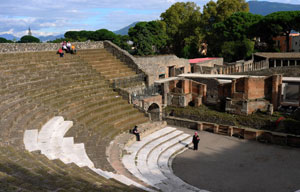City of hidden charms
|
Tourists jostle to fling coins into the Trevi Fountain, one of Rome's must-see spots. |
Museo delle Anime dei Defunti
The smallest, by far the strangest, and in my experience, the least likely museum in Rome at which you are likely to meet another visitor is the Museo delle Anime dei Defunti in Sacro Cuore, said to be the city's only neo-Gothic church.
On the banks of the Tiber, not far from the Castel Sant'Angelo, the church borders the residential Prati neighborhood, which I like for the Parisian ambiance of its stately apartment buildings and for its specialty grocery shops where you can join the Romans deciding between varieties of artisanal honey and salumi brought in from the provinces. The museum's name can be translated roughly as the "Museum of Souls in Purgatory".
The legend is that in 1897 a fire broke out in one of the chapels of the church, after which the priest saw the face of a soul in pain - an image that the flames had scorched into the wall behind the altar.
The priest naturally concluded that the face belonged to one of the unquiet dead desperate to get in touch with the living, and he began to make a collection of objects that proved his theory.
The tiny collection (an exhibit occupying one wall of a side chapel) offers documentary evidence of cases in which the dead used fire to make their wishes known - to persuade their family and friends to say more prayers for them and thus hasten their release from purgatory.
Included in the collection are hand- and fingerprints scorched into a variety of humble objects: a sleeve, a chemise, a prayer book, a pillow, a nightcap and an apron. Wall texts, translated into several languages, explain the particular circumstances that surrounded each of these unearthly visitations.
I find this intimate and peculiar collection to be powerfully affecting and touching. And it will give you something to tell your friends at home, who may have visited the Sistine Chapel but are far less likely to have discovered the Museum of Souls in Purgatory.
|
Museo delle Anime dei Defunti is said to be Rome's only neo-Gothic church. |
Centrale Montemartini
My cabdriver had never heard of Centrale Montemartini, and when he called his dispatcher, the voice squawking over the radio too didn't have any idea where it was.
In fact, it's not terribly hard to find - a brief bus ride or a somewhat longer walk along the Via Ostiense from the Ostiense train station, which lies at the base of the Aventine Hill and at the edge of the Testaccio neighborhood.
With its magnificent collection of classical Greek and Roman sculptures housed in a former electric power station built just after the turn of the 20th century, the museum ingeniously brings together the aesthetic of two eras widely separated by time - and persuades you that these two very distant and dissimilar groups of objects were made to be shown with (and complement) each other.
Opened in 1912, the thermoelectric plant, founded by the Franco Tosi Co, grew throughout the 1920s as more of Rome became electrified; various theories have been offered to explain why it remained in operation through World War II, when other plants and factories were destroyed.
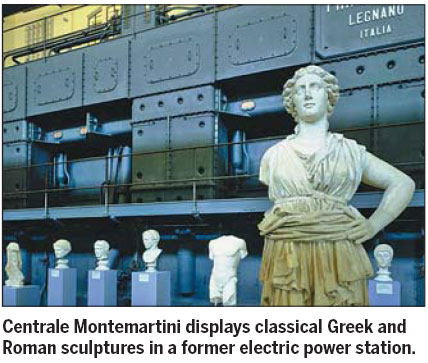
In 1997, the Greek and Roman sculptures were moved from the Capitoline Museums in central Rome to the industrial space to create more room in the city's older museums. Later it was decided to make the Centrale Montemartini a permanent installation for these acquisitions from the Capitoline Museums - to celebrate, and take advantage of, the striking ways in which the heavy, dark machinery contrasts with, and highlights, the delicacy and whiteness of the stone statuary.
Centrale Montemartini is a museum of industrial archaeology in itself. Much of the plant's original interior has been preserved; furnaces, pipes, conduits, scaffolding, ladders, metal balustrades, condensers, wrenches and gauges remain.
Consequently, strolling through the museum feels rather like navigating the interior of a gorgeously sculptural Art Deco turbine - a churning engine of modernism full of classical masterpieces that are as serene as the machinery is propulsive.
In the Machine Room are full figures and portrait busts, sections of a (431 BC) Temple of Apollo, and fragments from the colossal statue of the Goddess of Fortune that was originally in Rome's Largo Argentina.
In the final room is an enormous mosaic of a hunt scene from the 4th century. You can climb a staircase to a platform for a more comprehensive aerial view of the chaotic, detailed, beautifully rendered - and gory - image of a hunter spearing a wild boar while his frenzied dogs snarl at their prey.
Not far away is a tranquil and extraordinary lovely statue of a muse, possibly Polymnia, wrapped in a shawl, leaning on a column.
Nearby sat a young woman, a visitor to the museum, alone, studying the statue. She remained there for the entire length of our visit - undisturbed, contemplative, peaceful, enjoying the sort of experience that one can have in these less heavily populated but nonetheless remarkable secret corners of Rome.
New York Times






